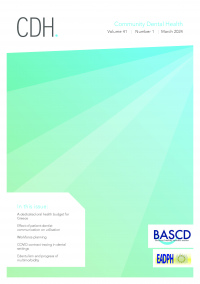June 2011
Geographical accessibility to dental care in the Japanese elderly
Abstract
Objective: The current research aims to clarify the factors relevant to elderly people’s access to dental care in Japan, particularly focusing on geographical accessibility. Methods: The sample was taken from among the Japanese elderly, aged 65 and over, who responded to a postal survey conducted in 2003 (n = 2,192). Six types of geographical accessibility to the dental clinics were calculated using Geographic Information Systems. Logistic regression analysis was conducted using ‘having a regular dentist’ as a dependent variable and geographical accessibility as an explanatory variable. Results: The results showed an association between having a regular dentist and geographical accessibility only for females. In the univariate model, distance to the closest dental clinics (OR=0.62 (95%CI: 0.43-0.90)), number of dental clinics at the school district level (OR=1.14 (95%CI: 1.03-1.26)), number of dental clinics at the municipality level (OR=1.02 (95%CI: 1.00-1.05)), and density distribution of dental clinics (OR=1.56 (95%CI: 1.11-2.19)) showed significant relations with having a regular dentist. After controlling for demographic, socioeconomic, and health related variables, only the density distribution of dental clinics showed significant relations at the 5% level, although distance and number of dental clinics kept a marginal significance. Conclusion: The current study verifies that geographical accessibility correlates with access to dental care among women, and that there were large gender differences concerning the issue of geographical access. Key words: Access to care, geographical accessibility, GIS, Japan, oral health.




